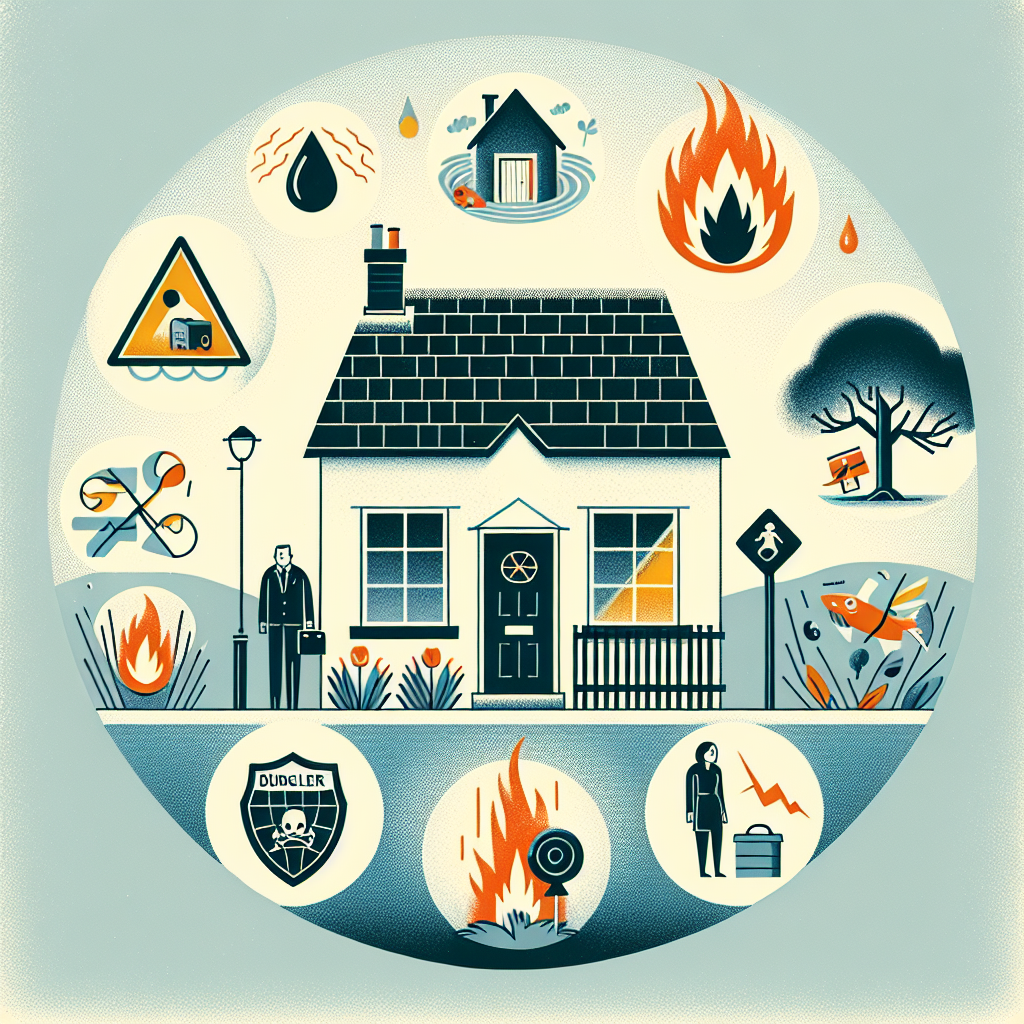Filed under Home Insurance on
Understanding All Perils Coverage in Home Insurance

Home insurance is a crucial part of safeguarding one’s most cherished investment against unforeseen financial burdens. Among the variety of coverages available, "All Perils Coverage" holds particular significance. This type of policy is designed to offer comprehensive protection, yet its complexities often leave homeowners puzzled. Understanding what All Perils Coverage entails can help homeowners make informed decisions and avoid unexpected costs.
What is All Perils Coverage?
All Perils Coverage, also known as Open Perils or Comprehensive Coverage, provides protection against all risks unless specifically excluded in the policy. Unlike Named Perils policies, which only cover perils explicitly listed, All Perils Coverage offers a broader safety net. This means that policyholders can rest assured that their property is covered for a wide range of unpredictable events, adding a layer of financial security.
Benefits of All Perils Coverage
Opting for All Perils Coverage offers several advantages:
- Comprehensive Protection: It covers a vast array of potential damages, providing peace of mind and reducing worries about unforeseen incidents.
- Flexibility: With fewer specific exclusions, homeowners can have greater flexibility in claims, which means less hassle debating over coverage specifics.
- Simplification: Instead of juggling multiple policies for different risks, All Perils Coverage simplifies your insurance needs into one comprehensive package.
Common Perils Covered
While specifics may vary based on the insurance provider, common perils often covered include:
- Fire and smoke damage
- Theft and vandalism
- Windstorms and hail
- Water damage (certain restrictions may apply)
- Falling objects
Typical Exclusions
Despite its extensive coverage, All Perils policies do come with certain exclusions that homeowners should be aware of:
- Earthquakes: Often requires additional coverage.
- Floods: Typically excluded and requires separate flood insurance.
- Wear and Tear: Routine maintenance or gradual deterioration isn't covered.
- Intentional Damage: Acts committed intentionally by the policyholder.
- Government Actions: Coverage may not extend to damage caused by war or nuclear hazards.
Choosing the Right Policy
When selecting the right home insurance policy, comparing the benefits of All Perils Coverage against other types is crucial. Here are some considerations:
Compare Different Policies
Understanding the difference between All Perils Coverage and Named Perils is vital. If you live in an area prone to specific risks, a Named Perils policy might offer adequate protection. However, for all-encompassing coverage, All Perils will likely be the superior option.
Evaluate Your Needs
Take the time to assess your specific requirements. Consider property value, location, and personal risk tolerance. An All Perils policy may carry higher premiums, but it also reduces financial risks associated with unexpected incidents.
Consult with Industry Experts
Insurance can be complex, and policies often have fine print that’s easy to overlook. Consulting with an insurance expert or broker can help clarify details and ensure you choose the best coverage for your needs.
Cost Considerations for All Perils Coverage
Understanding the cost elements associated with All Perils Coverage helps in making a financially sound decision:
Premiums and Deductibles
The breadth of coverage means that All Perils policies generally have higher premiums compared to Named Perils. However, it's essential to weigh this against the potential cost savings in the event of an incident. Deductibles can sometimes be adjusted to lower monthly premiums, although this could mean paying more out of pocket when claims arise.
Discount Opportunities
Many insurance providers offer discounts that can mitigate the higher cost of All Perils Coverage. These might include bundling home and auto policies, installing security systems, or being claims-free for a certain period.
Real-World Scenarios: Why All Perils Coverage Matters
To truly understand the value of All Perils Coverage, consider real-world examples where such comprehensive insurance made a significant difference:
- Natural Disasters: In areas vulnerable to windstorms, fires, or other natural incidents, All Perils Coverage can prevent potentially crippling financial loss.
- Unforeseen Accidents: When bizarre circumstances, like a tree falling on a house due to a microburst, happen, homeowners with comprehensive coverage can repair damages without financial strain.
- Acts of Vandalism: Coverage in case of vandalism can be a lifesaver for homeowners, sparing them from hefty costs associated with cleanup and repair.
Industry Trends and the Future of Home Insurance
With the climate becoming increasingly unpredictable, the insurance industry is seeing a shift towards policies offering broader coverages like All Perils. Additionally, the rise of smart technology is influencing policy structures by potentially reducing premiums through enhanced risk monitoring.
Emerging technologies are allowing better risk assessment and underwriting, which may further enhance the landscape of All Perils Coverage, making it an even more appealing option for future homeowners.
Conclusion
Deciding on the right home insurance policy is a major financial decision. All Perils Coverage offers an expansive safety net for homeowners, covering a wide range of risks and providing peace of mind. Although it comes with higher premiums, the comprehensive protection it offers can result in significant long-term savings by minimizing out-of-pocket expenses during claims.
By understanding the ins and outs of All Perils Coverage, comparing different policies, and consulting industry experts, homeowners can better navigate the intricacies of home insurance. As industry trends evolve, those who prioritize comprehensive coverage will find themselves better prepared for whatever the future holds, ensuring their homes are well-protected against life's unpredictabilities.





